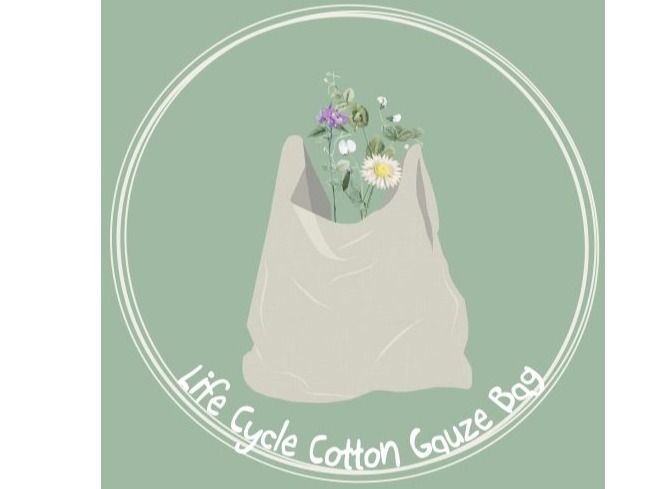
Added: Oct 23, 2021
Last edited: Oct 23, 2021
The present invention offers the most cost-saving, effective alternative of grocery bag handle design that not only will reduce up to 30% fabric and fuel for its transportation, but also will lower up to 9 times Manpower and Energy for bag manufacturing Vs traditional grocery bags handle design in today’s Market.
Furthermore this invention offers also another alternative: "The never-ending Life cycle of cotton gauze grocery bag".A combination of this simple design with the lightest and most absorbent possible cotton gauze fabric will make the grocery bag "A life cycle multi-function" that later after bringing groceries at home can easily unfasten to be used as replacement of many cotton Items
There are two traditional grocery bag handle designs most often available in the market. "Attached" and Cutout Holes* handle designs applied to any kind of woven and non-woven fabrics. Just for the handles bag manufacturers use up to 30% extra fabric, up to 30% fuel for its (handles) transportation, also Manpower and Energy for sewing process on handles.
It is highly beneficial to make bag manufacturers aware that shoulder handles such as "Attached and Cutout hole" are not necessary, especially for grocery bags which will be used from Store-to Cart-to Car- to Home. A need for a simple handle design is necessary to avoid extra fabric on Attached handles, also to avoid disposed off fabric on “Cutout hole” design.(A Detailed Competitive analyses is attached to this invention)
This invention offers a new design that features handles incorporated into the body of the bag with fabric INTACT - one square piece 45 x 45 cm.
Handles are created by leaving a gap during the sewing process (break on sewing ) of around 16 cm on both sides of the bag .The 16 cm gap acts as handle and allow the user to carry the grocery bag with a firm grip.
A new handle Design is the first step of this invention in support of sustainability that can be applied to any kind of woven and non-woven fabrics.
However the combination of this simple design with the lightest and most absorbent possible cotton gauze fabric will make "A life cycle multi-function grocery bag" that later can easily unfasten to be used as replacement of many cotton Items at home such as:
Washable cotton Diapers Inserts.
Burping/Spit-up Cloth for baby
Replace Dishcloth and cleaning cloth used for general cleaning
Use as cotton napkins in kitchen to replace paper towels.
also be washed, and reused for all of the above, including as a reusable grocery bag if needed.
The most important point is that this sustainable solution does not need any additional investments in infrastructure or machinery to be implemented.
The grocery Bag Manufacturer needs to simply replace the use of traditional "Attached or Cutout Hole:" designs with this new one in the same location with the same machinery.
Also they have to consider using self-finished edges of fabric at the opening of the bag this will reduce sewing costs for the grocery bag (such as Manpower and Energy)
Furthermore due to its simplicity the new design will allow the bag to be produced in large quantities (mass produce)
-Cotton production worldwide is around 25 million ton/year. In order to be able to replace all 400 billion single use plastic grocery bags around the world, 7 million tons of cotton per year will need to be produced if we replace them with gauze bags ( for example grade #60 which only weigh about 17gr each bag).
If gauze bag (grade # 60) is washed and return to market at least four times, the cotton amount of grocery bags will be reduced to 2 million ton cotton/year. This amount will not only replace all plastic bags but at the same time will continue to be reused at home as a life cycle product, thus drastically reducing the cotton production for other items already manufactured and shipped separately by the Textile industry as a single product to different stores.
